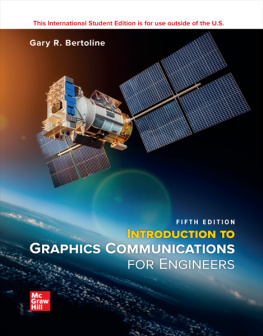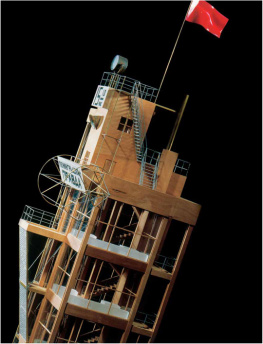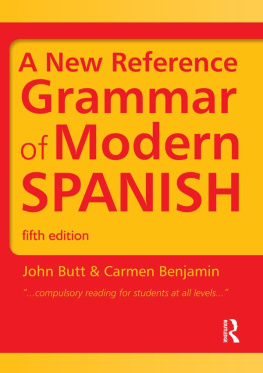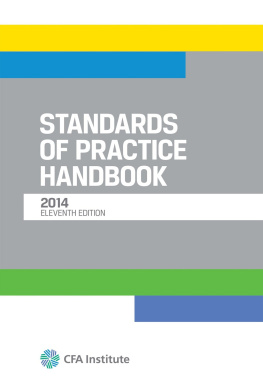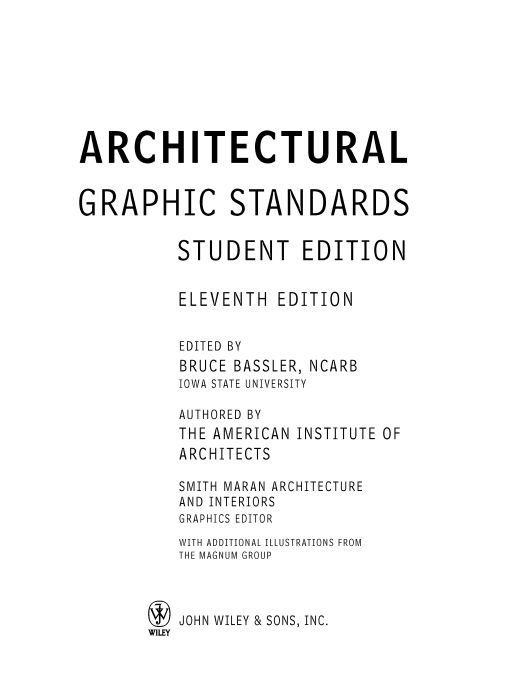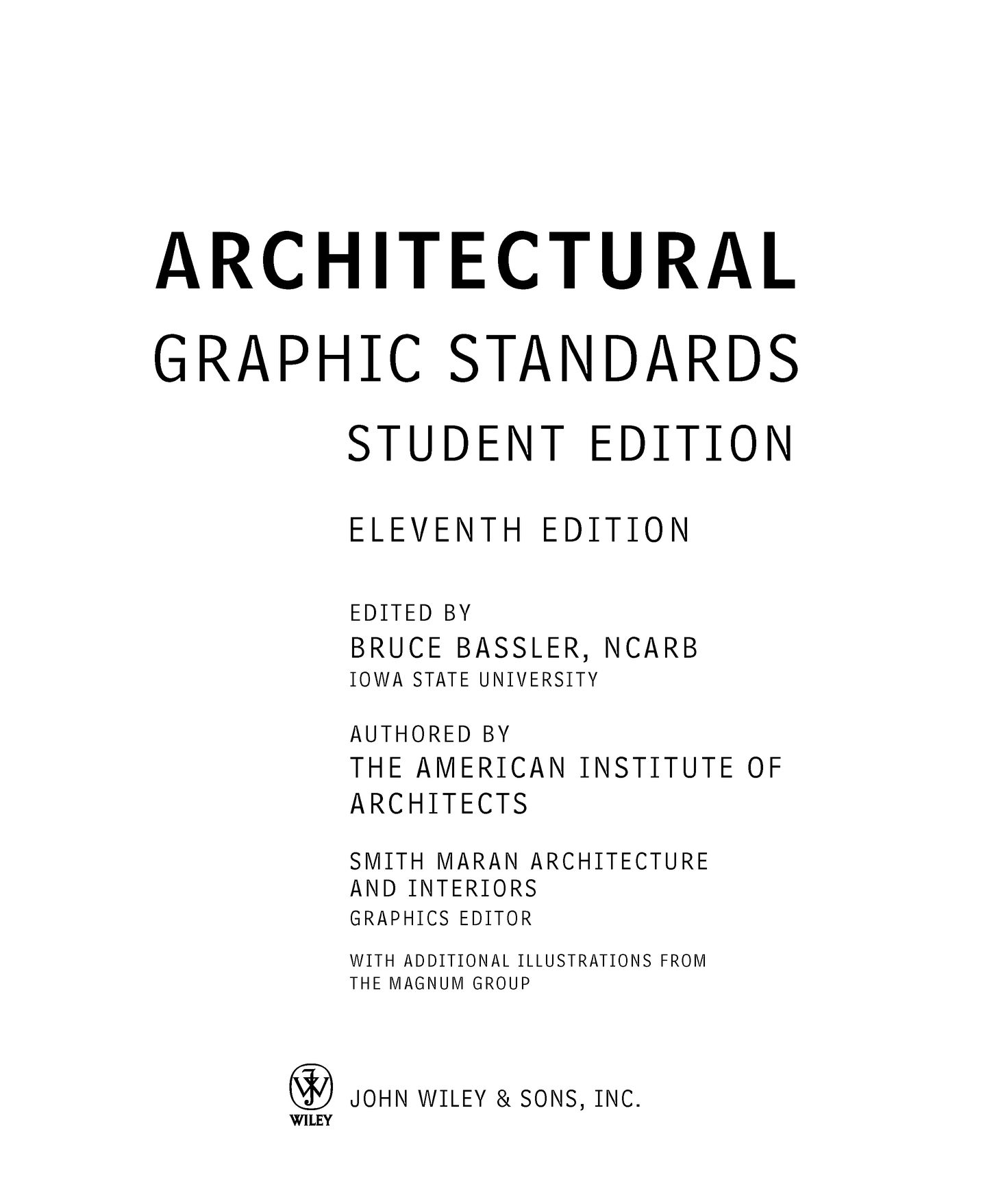Table of Contents
ACKNOWLEDGMENTS
JOHN WILEY & SONS, INC.
AMANDA L. MILLER
VICE PRESIDENT AND PUBLISHER
KATHRYN MALM BOURGOINE
ACQUISITIONS EDITOR
LAUREN POPLAWSKI
EDITORIAL ASSISTANT
KERSTIN NASDEO
PRODUCTION MANAGER
JACQUELINE BEACH
PRODUCTION EDITOR
JUSTIN MAYHEW
SENIOR MARKETING MANAGER
DESIGN/PRODUCTION
BRUCE MAU DESIGN, INC.
DESIGNER
LUCINDA GEIST
COMPOSITION
JANICE BORZENDOWSKI
COPYEDITOR
BRUCE BASSLER
STUDENT EDITION EDITOR
AGS EDITORS
DENNIS J. HALL, FAIA, FCSI
SENIOR EXECUTIVE EDITOR
NINA M. GIGLIO, ASSOC. AIA, CSI
EXECUTIVE EDITOR
RICHARD L. HAYES, PHD, AIA
EXECUTIVE EDITOR
KEVIN SHAFER
DEVELOPMENT EDITOR
WANDA MADRID-DIAZ, ASSOC. AIA
ASSISTANT EDITOR
LESLIE H. SCHLESINGER, CSI-I
ASSISTANT EDITOR
GRAPHICS EDITOR
SMITH MARAN ARCHITECTURE AND INTERIORS
IRA SMITH, PROJECT PRINCIPAL
ERIK MARAN, PRINCIPAL
KIMBERLY MURRAY, GRAPHICS MANAGER
PETER GREENBERG, GREENBERG DESIGN
DANIEL DAGOSTINO
CAROLINE GUSTUS
MICHEALLA LEE
JOHN PETULLO
ADDITIONAL ILLUSTRATIONS
THE MAGNUM GROUP
LUCKY BALARAMAN
V.P. RAJAGOPAL
S. RAJESHKUMAR
V. KARTHIKEYAN
STUDENT EDITION ADVISORY BOARD
MARK BARNHOUSE, AIA, RA
ELIZABETH BOWEN
KEITH HEDGES, AIA
MEGAN LUENEBURG
BRUCE MCMILLAN, AIA
JONATHAN OCHSHORN
AGS 11TH EDITION ADVISORY BOARD
DAVID W. ALTENHOFEN, AIA, CSI
RENEE CHENG, AIA
WILLIAM MCDONOUGH, FAIA
J. ROBERT HILLIER, FAIA
KIERAN TIMBERLAKE ASSOCIATES, LLP
RICHARD POLLACK, FAIA, FIIDA
CATHY J. SIMON, FAIA
SUBJECT EDITORS/AUTHORS
DAVID W. ALTENHOFEN, AIA, CSI
LEONARD R. BACHMAN, RA
RENEE CHENG, AIA
JOSEPH DEMKIN, AIA
THOMAS FISHER
CARL GALIOTO, FAIA
ROBIN GUENTHER, FAIA
DENNIS J. HALL, FAIA, FCSI
STEPHEN HARBY
REBECCA INGRAM, RA
GEORGE B. JOHNSTON
KAREN J. KING, RA
JOHN P. MCCARTHY, PE, SE
WILLIAM MCDONOUGH, FAIA
MARYROSE MCGOWEN, AIA
BARBARA NADEL, FAIA
MARK RYLANDER, AIA
WILLIAM SARAMA, AIA
TIMOTHY SHEA, AIA
ALF SIMON, PhD, FCSLA, ASLA
NANCY SOLOMON, AIA
CONTRIBUTORS
GEOFFREY C. ADAMS, RA
RICHARD O. ANDERSON, PE, HON. M. ASCE
JOAN BLUMENFELD
MARK CHILDS
CHARLES CULP, PHD, PE
BRUCE FERGUSON
ANTHONY GOLEBIEWSKI, AIA
WALTER GRONDZIK, PE
HENRY GROSSBARD
JEFF HABERL, PhD, PE
CODY HICKS
RESHMA HOLLA
LACHMI KHEMLANI, PHD
STEVE MARANOWSKI
WALTER MOBERG, ASSOC. AIA
JAMES W. NIEHOFF, PE
FAITH OKUMA, ASLA
ELAINE OSTROFF, HON. AIA
LISA PASSAMONTE GREEN
JON PEARSON
JOHN ROWE
GANPAT SINGHVI, PHD, PE, SE
MICHAEL J. SMITH, AIA
MARC SWACKHAMER
DENNIS WILKINSON, ASLA
PUBLISHERS NOTES ON THE 11TH EDITION
Unless a hidden stash of documents suddenly turns up, we will never know why John Wiley, my grandfathers grandfather, developed an interest in architecture. Without documents, we are forced to parse the logic of Johns publishing program, which was shaped in part by his experiences working with his father, Charles, the founder of the company. We do know two things. Soon after John revived his fathers faltering publishing house, he developed an interest in what we publishers like to call need to know information. Both John and his father played formative roles in the origins of American literature, publishing writers such as James Fenimore Cooper, Washington Irving, Nathaniel Hawthorne, Herman Melville, and Edgar Allan Poe. Working with his partner, George Palmer Putnam, John evinced an interest in more practical subjects, such as architecture, engineering, landscape design, and surveying, and consequently, Wiley & Putnam would come to play a comparable role in the development of an American architecture.
Wileys 200-year history is filled with important publications that have helped shape the built environment. Wiley & Putnam published Andrew Jackson Downings Theory and Practice of Landscape Gardening with a View to the Improvement of Country Residences and Cottage Residences in 1841 and 1842, respectively. Downing was an important figure in the development of a distinctive American architecture, one closely associated with the countrys early suburbs, where John would move in the 1850s. Downing also influenced the shape of the urban landscape perusing large-scale urban park designs with his assistant, Calvin Vaux.
John Wileys other interest, which looks something like a personal obsession, was John Ruskin, the renowned British aesthete, artist, social reformer, and architectural critic. Beginning in 1851, and for the rest of Johns active publishing life, he and his offspring, as John Wiley & Sons, published endless sets and single monographs penned by Ruskin.
Soon after John split amicably with Putnam in 1848, he gave up on fiction and moved slowly but decidedly into publishing for the academy and the professions, a move that was accelerated by the arrival in the business of a second son, William Halsted Wiley, a civil engineer. John published books that would be used by carpenter-builders, draftsmen, and architects and then, with his sons, branched out more and more into related engineering professions. As with the history of Architectural Graphic Standards, one can trace the evolution of home, commercial, and industrial constructionrailroad and bridge building, ship and fortification design, highway construction, all of those physical features associated with the industrialization of Americaby delving into Wiley books.
Our company was particularly adept at handbook publishing, and Frank E. Kidders Architects and Builders Pocket-book, later rewritten by Harry Parker, went through 18 editions between its original publication in 1884 and 1986, when it finally went out of print.
The arrival of Architectural Graphic Standards in 1932 was part of a natural progression. It was very much in the tradition of Wileys century-long commitment to quality publishing for a particular profession or group of professions. Charles G. Ramsey and Harold R. Sleeper authored and designed the first edition and continued to do so until Sleepers death. Sleeper, as George B. Johnston points out in his introductory essay, published other books with Wiley. At one point in the 1950s, when Wiley was beginning to outgrow its offices at 440 Park Avenue South, my father asked Sleeper to design a building for the company. However, Wiley was neither large nor profitable enough at the time to undertake such an ambitious project, and the project was not realized.
From the start, AGS acquired the reputation as an indispensable tool for architects and others, a reputation that has been sustained by constant revision to assure that the content keeps up with changes in all aspects of design and construction. I must add that even from the perspective of a nonprofessional, the book itself is an appealing work of art. Beginning in the mid-1990s, constant revision has been supplemented by the delivery of


